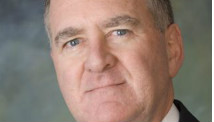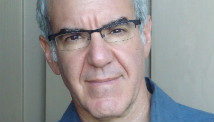PRETORIA, South Africa (AP) — Paralympic superstar Oscar Pistorius was charged Thursday with the murder of his girlfriend who was shot inside his home in South Africa, a stunning development in the life of a national hero known as the Blade Runner for his high-tech artificial legs.
Reeva Steenkamp, a model who spoke out on Twitter against rape and abuse of women, was shot four times in the predawn hours in the house, in a gated community in the capital, Pretoria, police said.
Hours later after undergoing police questioning, Pistorius left a police station accompanied by officers. He looked down as photographers snapped pictures, the hood on his gray workout jacket pulled up, covering most of his face. His court hearing was originally scheduled for Thursday afternoon but has been postponed until Friday to give forensic investigators time to carry out their work, said Medupe Simasiku, a spokesman for the prosecution.
South Africans were shocked at the killing. But while Pistorius captured the nation's attention with his Olympic quest, police said there was a recent history of problems involving him. Police spokeswoman Brigadier Denise Beukes said the incidents included "allegations of a domestic nature."
"I'm not going to elaborate on it but there have been incidents (at Pistorius' home)," Beukes said. Police in South Africa do not name suspects in crimes until they have appeared in court but Beukes said that the 26-year-old Pistorius was at his home at the time of the death of Steenkamp and "there is no other suspect involved."
Pistorius' father, Henke, declined to comment when contacted by The Associated Press, only saying "we all pray for guidance and strength for Oscar and the lady's parents."
Neither Pistorius' agent Peet van Zyl nor coach Ampie Louw could be reached while Pistorius' own cellphone went straight to voicemail.
Pistorius' former coach, Andrea Giannini, said he hopes it was "just a tragic accident." Giannini said he believed that Pistorius had been dating Steenkamp for "a few months."
"No matter how bad the situation was, Oscar always stayed calm and positive," Giannini told the AP in Italy. "Whenever he was tired or nervous he was still extremely nice to people. I never saw him violent."
Yet Pistorius had troubles in his personal life. In February 2009, he crashed a speed boat he was piloting on South Africa's Vaal River. Witnesses said he had been drinking before the crash and officers found alcoholic beverages in the wreckage, though they acknowledged at the time they hadn't conducted a blood test on the athlete. Pistorius broke his nose, jaw and several ribs in the crash, as well as damaged his eye socket and required some 180 stitches to his face.
In November, Pistorius also found himself in an altercation with a local coal mining millionaire over a woman, South African media reported. Eventually, the two men involved the South African Police Service's elite Hawks investigative unit before settling the matter.
Pistorius owned firearms and posted a photograph of himself at a shooting range in November 2011 to the social media website Twitter, bragging about his score.
"Had a 96% headshot over 300m from 50shots! Bam!" he tweeted.
Police said that earlier reports that Steenkamp may have been mistaken for a burglar by Pistorius did not come from the police. Several local media outlets initially reported that the shooting may have been accidental.
Capacity Relations, a talent management firm, earlier named model Steenkamp as the victim of the shooting. Police spokeswoman Lt. Col. Katlego Mogale told the AP that officers received a call around 3 a.m. after the shooting.
A 9 mm pistol was recovered and a murder case opened against Pistorius.
Pistorius enjoyed target shooting with his pistol and an online advertisement featuring him for Nike read: "I am a bullet in the chamber." An article in January 2012 in The New York Times Magazine described him talking about how he pulled a pistol to search his home when his alarm went off the night before an interview. At Pistorius' suggestion, he and the journalist went to a nearby target range where they fired at targets with a 9 mm pistol. At one point, Pistorius told the writer: "If you practiced, I think you could be pretty deadly."
Asked how often he went target shooting, Pistorius replied: "Just sometimes when I can't sleep."
Police have still not released the name of the woman, but the publicist for Steenkamp confirmed in a statement that the model was dead.
"We can confirm that Reeva Steenkamp has passed away," Steenkamp's publicist Sarit Tomlinson said. "Our thoughts and prayers go to the Steenkamp family, who have asked to have their privacy respected during this difficult time, everyone is simply devastated. She was the kindest, sweetest human being; an angel on earth and will be sorely missed."
Tomlinson said Steenkamp, known simply as Reeva, was one of FHM's (formerly For Him Magazine) 100 Sexiest Women in the World for two years running, appeared in countless international and national advertisements and was one of the celebrity contestants on the reality show "Tropika Island of Treasure," filmed in Jamaica.
She and Pistorius were first seen publicly together in November at an awards ceremony in Johannesburg. Later, she began mentioning the athlete in public messages on Twitter.
She also tweeted messages urging women to stand up against rape as well as her excitement about Valentine's Day. "What do you have up your sleeve for your love tomorrow?" she tweeted. "It should be a day of love for everyone."
Pistorius made history in London last year when he became the first double-amputee track athlete to compete in the Olympic Games, propelling him to the status of an athletics superstar.
Having had both his legs amputated below the knee before his first birthday because of a congenital condition, he campaigned for years to be allowed to compete against able-bodied athletes. Having initially been banned because of his carbon fiber blades — which critics said gave him an unfair advantage — he was cleared by sport's highest court in 2008 and allowed to run at the top events.
He competed in the 400 meters and on South Africa's 4x400 relay team at the London Games, making history when his selection for South Africa's team was confirmed at the very last minute. He also retained his Paralympic title in the 400 meters in London.
South Africa's Sports Confederation and Olympic committee released a statement on Thursday saying they had been "inundated" with requests for comment but were not in a position to give out any details of the shooting. The International Paralympic Committee also said it wouldn't comment in detail apart from offering its condolences to the victim's family.
South Africa has some of the world's highest murder rates, with nearly 50 people killed each day in the nation of 50 million. It also has high rates of rape, other assaults, robbery and carjackings.
U.N. statistics show South Africa has the second highest rate of shooting deaths in the world, second only to Colombia.
"The question is: Why does this story make the news? Yes, because they are both celebrities, but this is happening on every single day in South Africa," said Adele Kirsten, a member of Gun Free South Africa. "We have thousands of people killed annually by gun violence in our country. So the anger is about that it is preventable."
___
Imray reported from Cape Town, South Africa. Associated Press writer Michelle Faul contributed to this report from Johannesburg.


